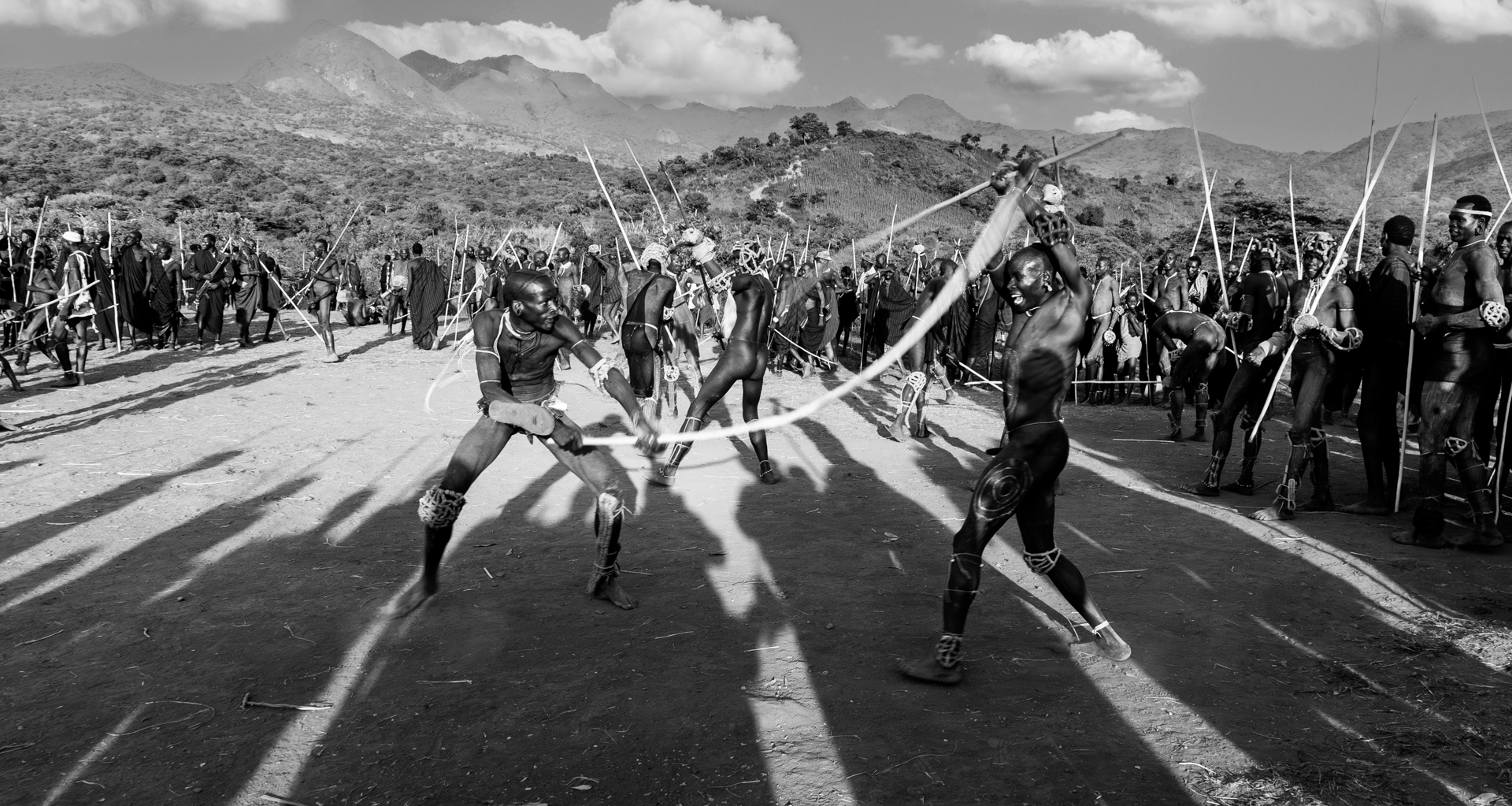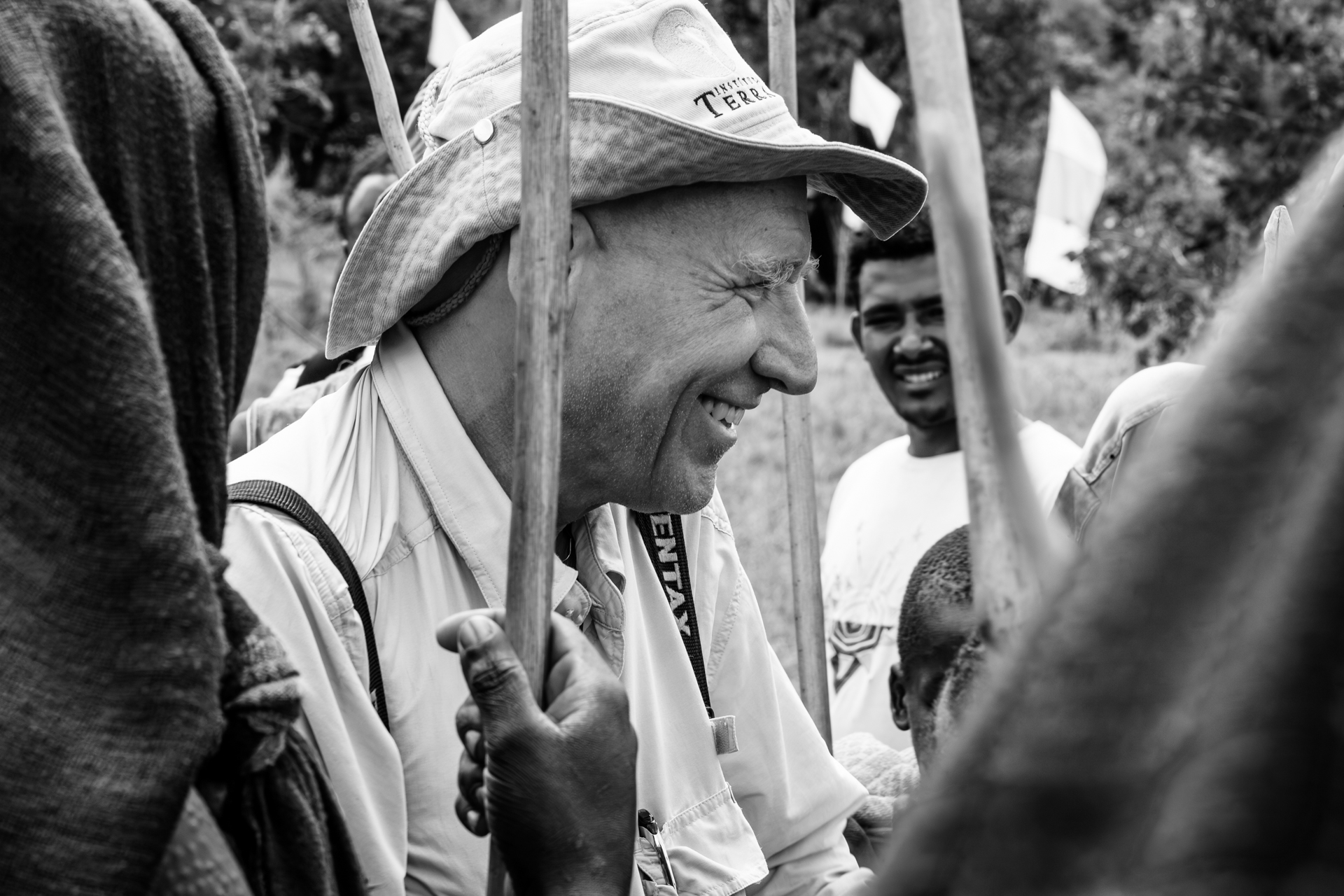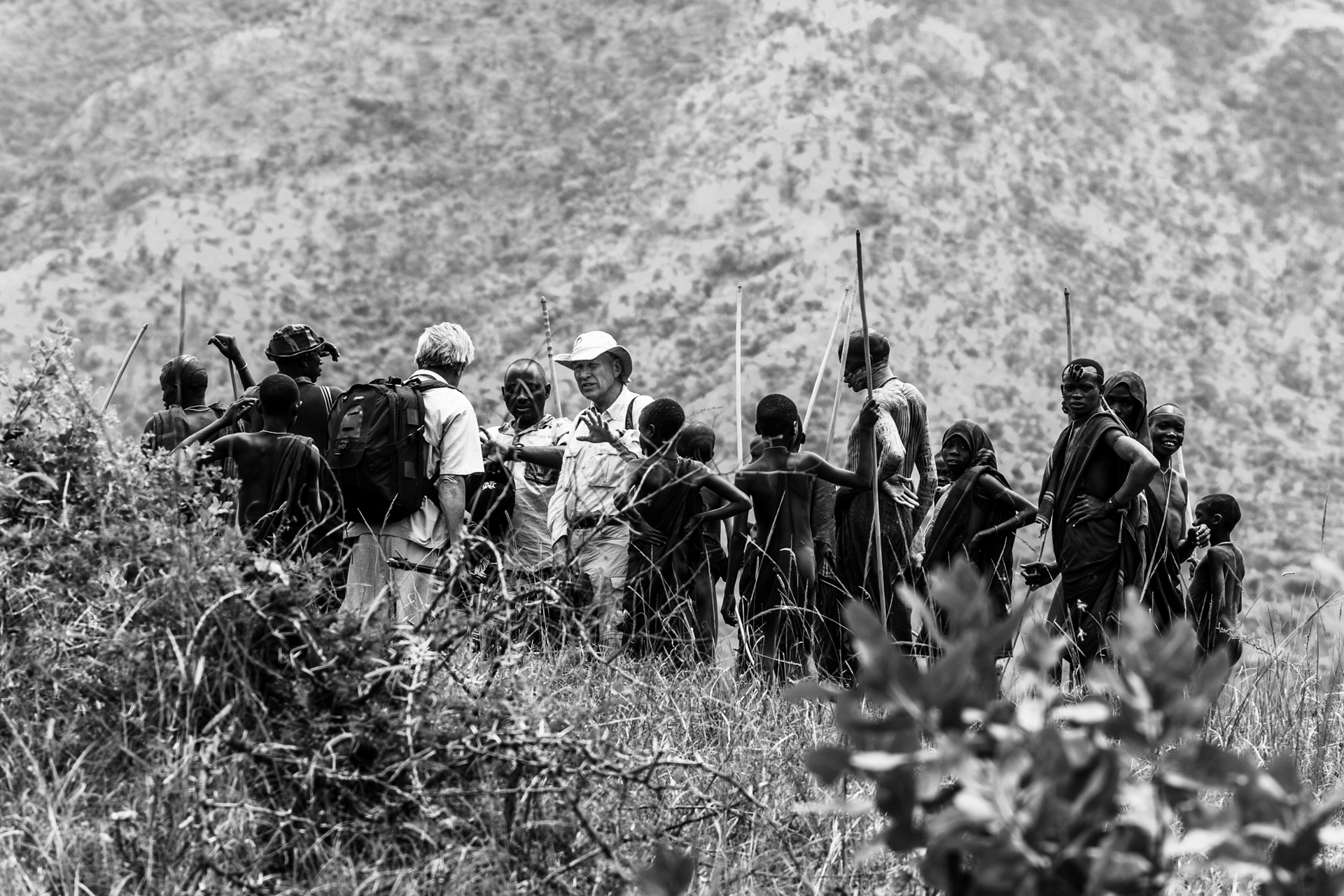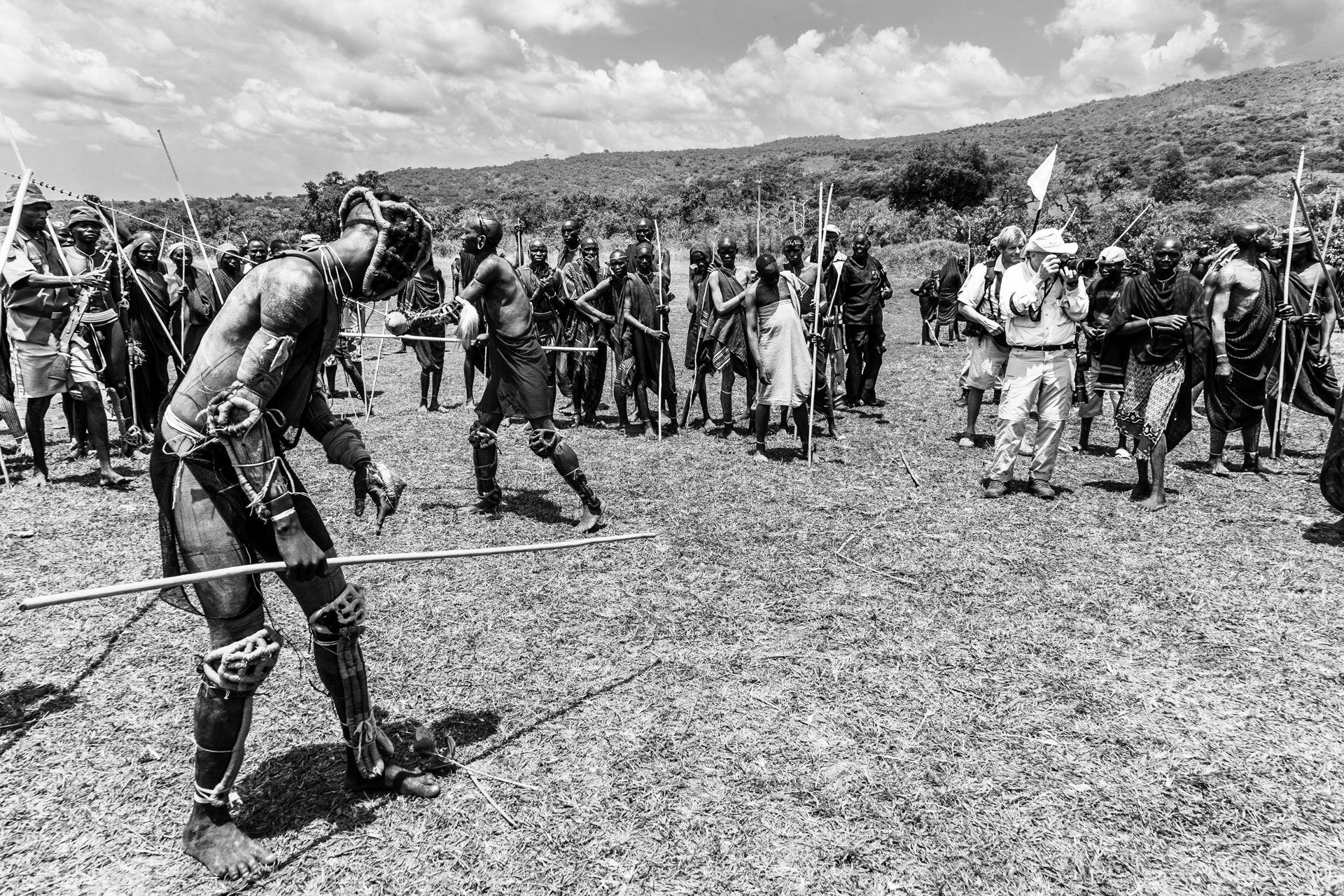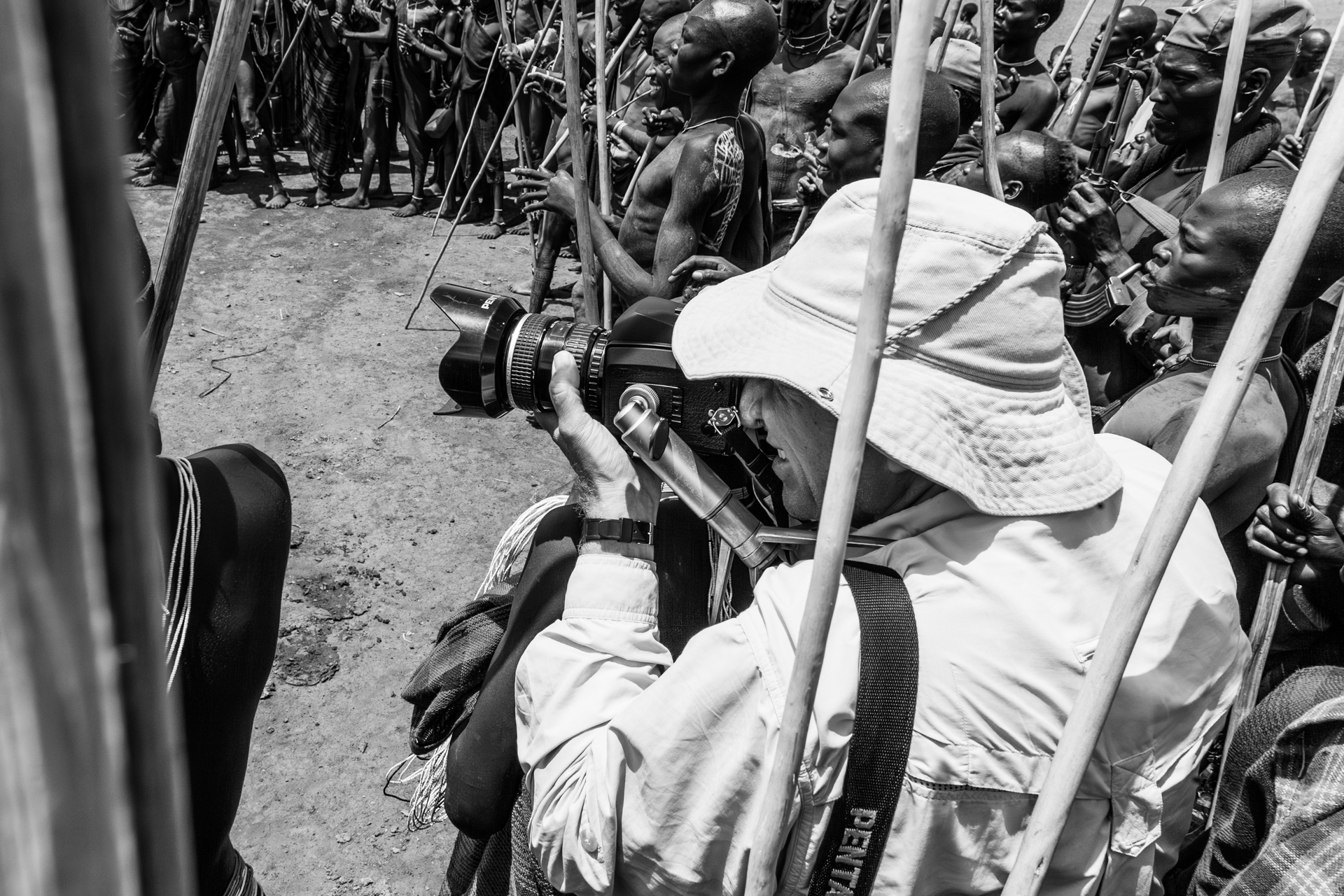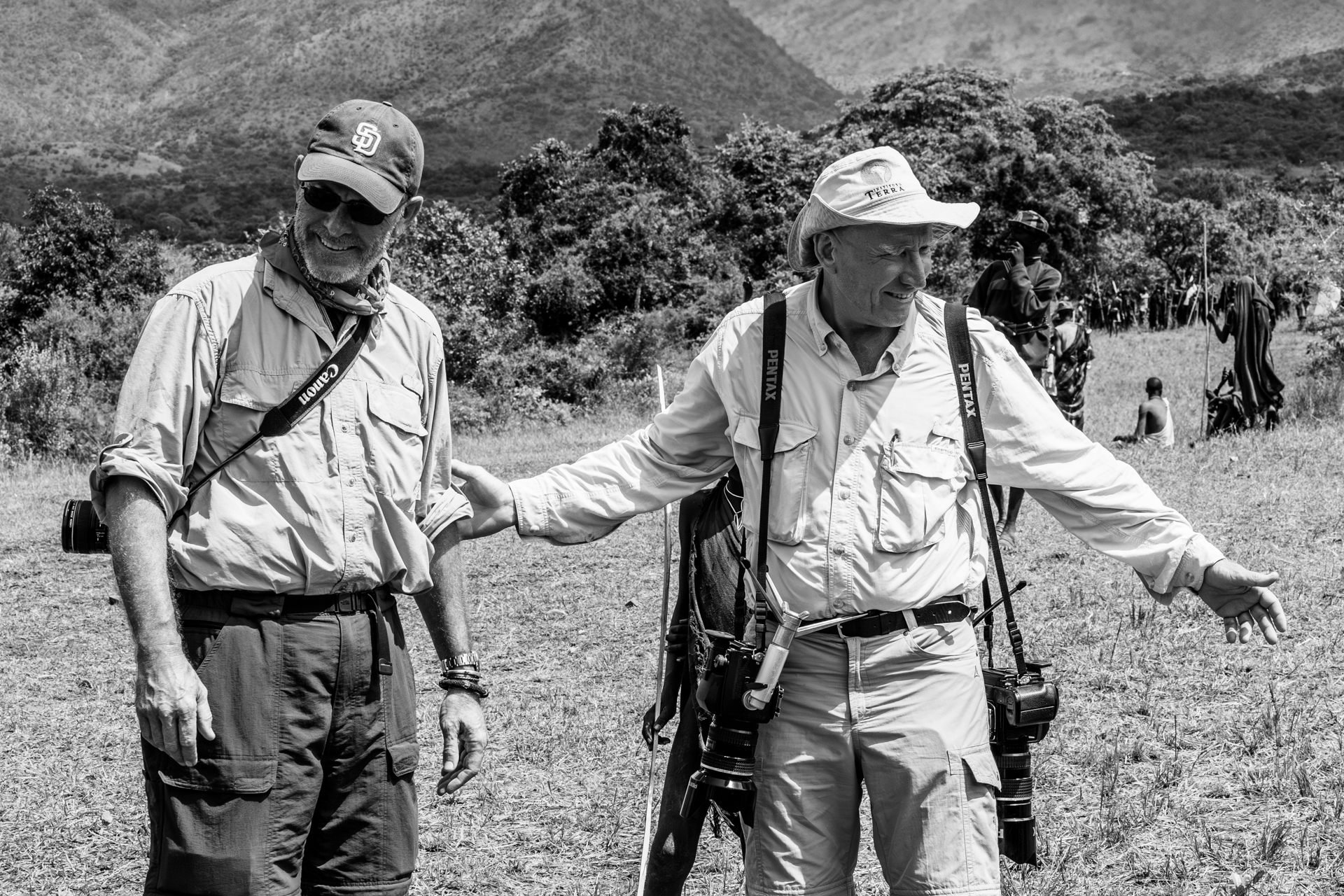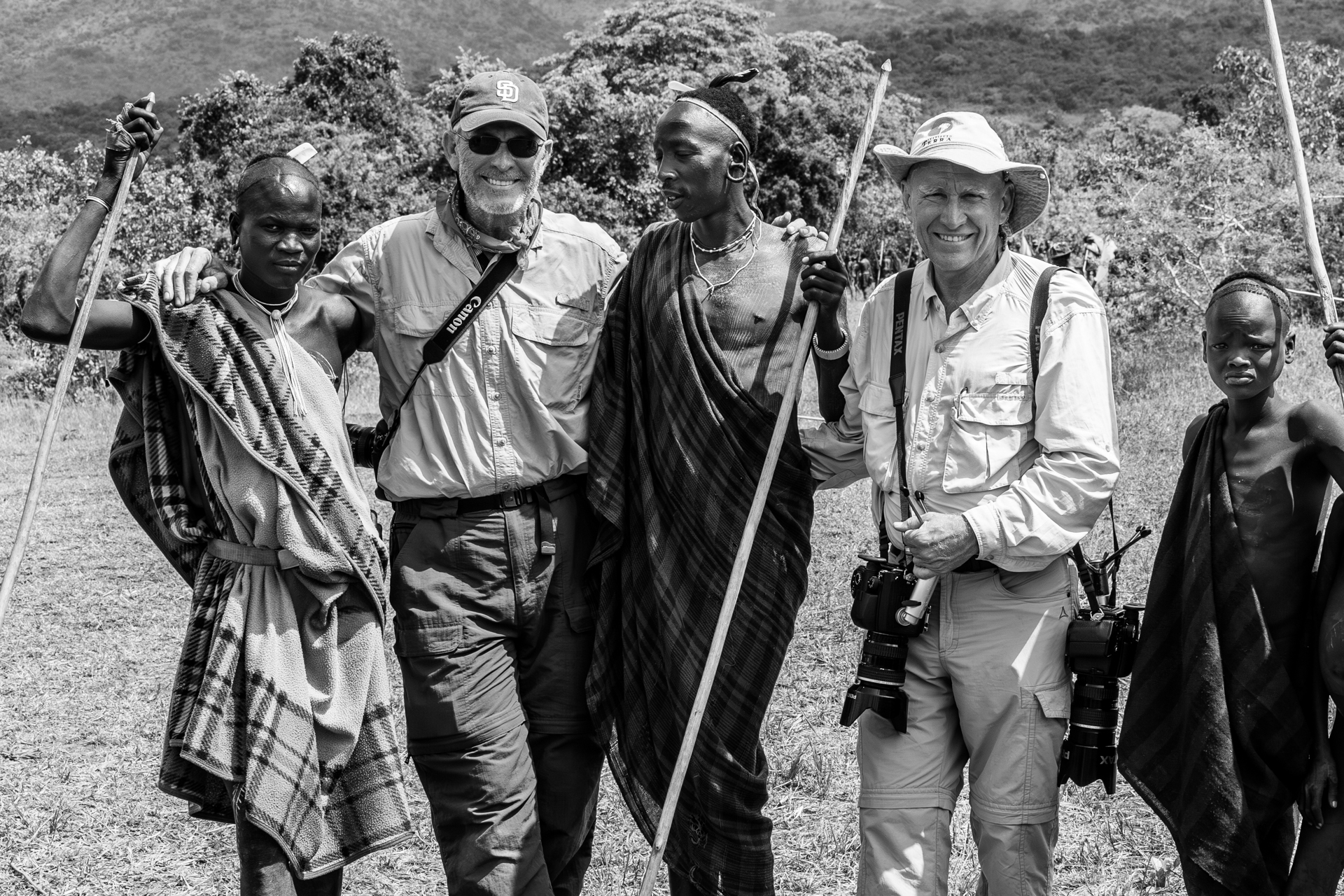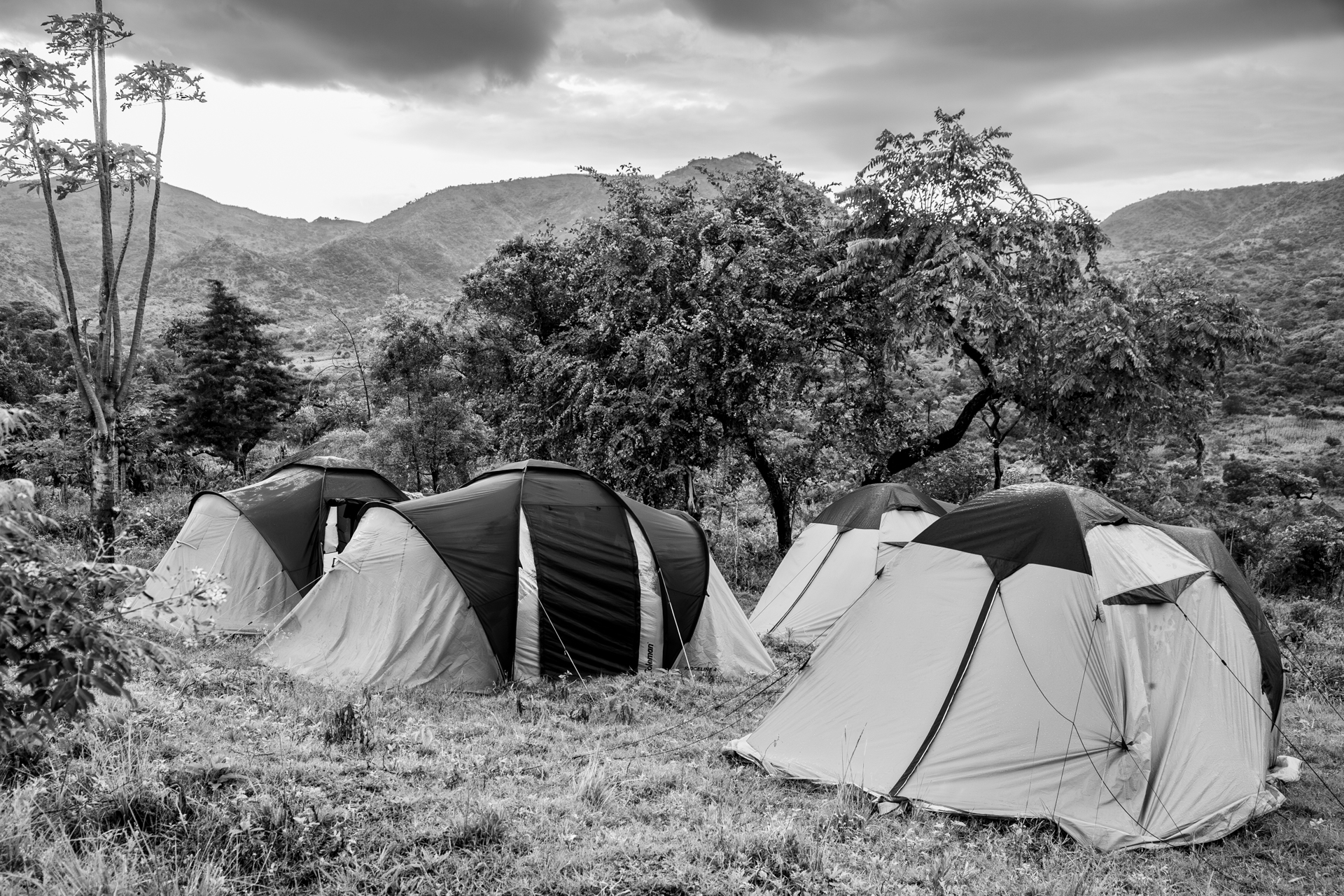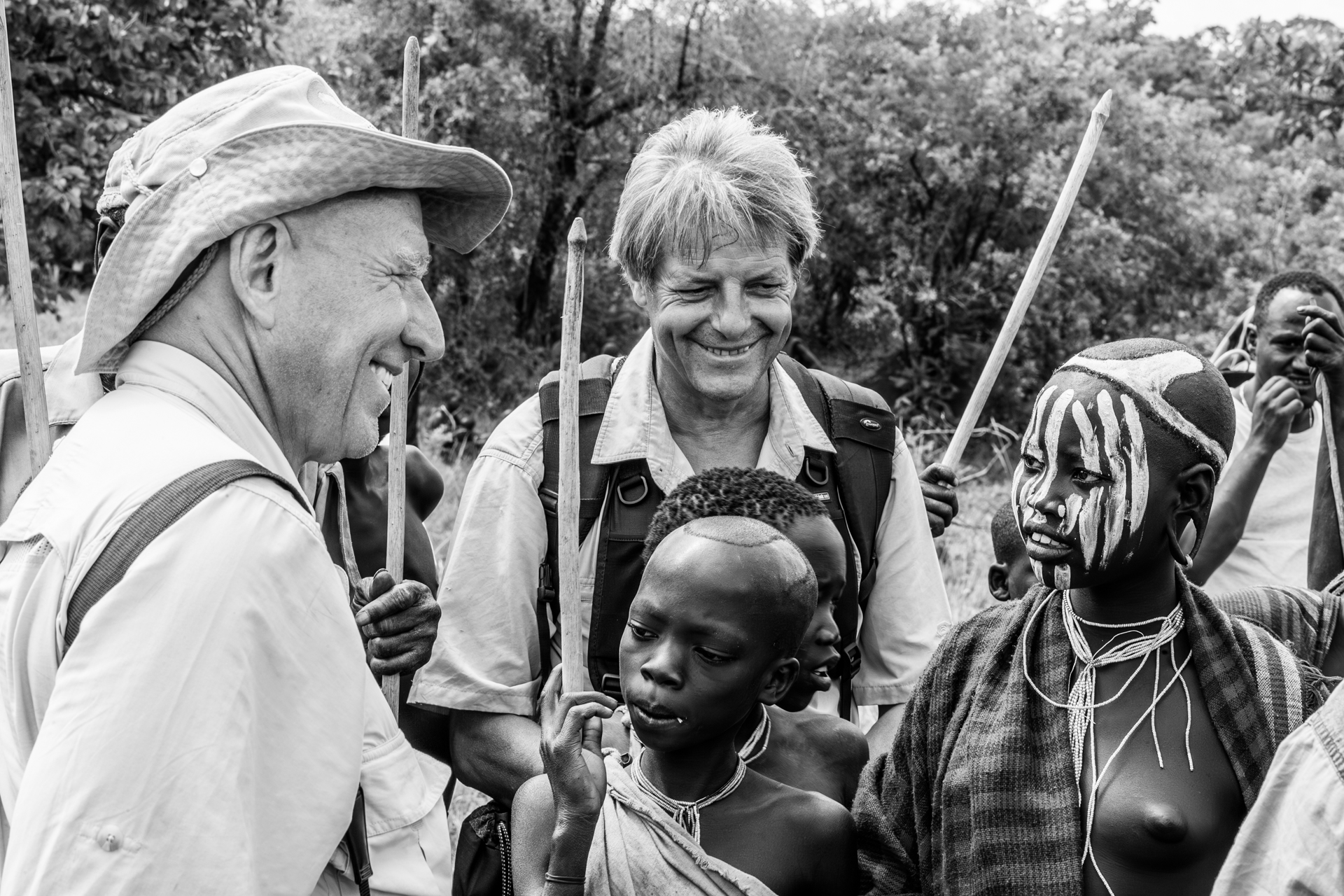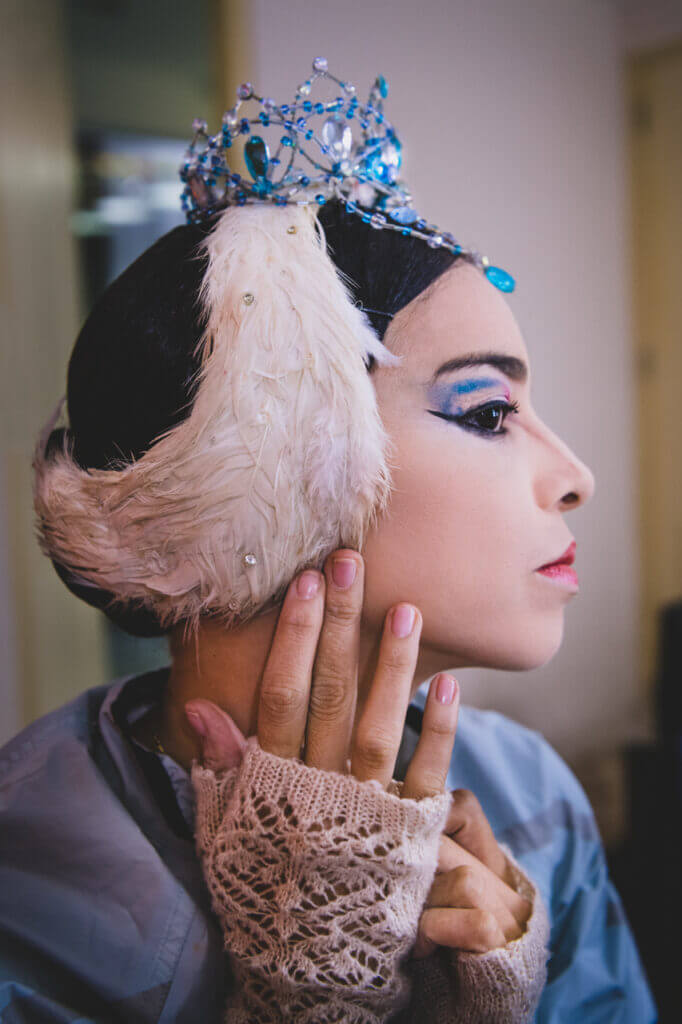Remembering Sebastião Salgado
Sebastião Salgado and I were in the Upper Omo Valley, deep in southwestern Ethiopian (2007), in the land of the Suri people. This remote and rugged region, marked by arid hills and wide, open savannah, was the setting for one of the most powerful cultural expressions I’ve ever witnessed: the Donga.
Donga is a ritualized form of stick fighting practiced by the Suri men. It’s not just sport, it’s a test of strength, courage and honor, as well as a rite of passage into manhood. Victories can bring prestige and sometimes a bride.
We had come to photograph this tradition, to document the beauty and intensity of a practice handed down through generations. The fighters, lean and powerful, entered the arena barefoot and bare-chested, each carrying a long, slender hardwood staff. Their bodies were often decorated with white clay or adorned with scars, marks of previous battles or artistic expressions of pride.
There was a rhythm to it, almost like a dance. The men circled each other, feinted, lunged, struck. The crowd surged with every blow. Sometimes the fights ended quickly, a solid hit landing across the shoulder or thigh. Other times, they went on, with both men bloodied and breathing hard, yet still standing, still proud.
As photographers, we kept our distance, respectful of the gravity of what was unfolding. This was not performance, it was deeply personal. We were outsiders granted a rare window into something that had nothing to do with us and everything to do with them.
We had eight tents set up in the village of Tulgit. Sebastião Salgado was in one, his assistant Jacques Bartholomew, a Frenchman and mountain guide from the Alps, was in another. Myself, my driver Fuad, and our cooks occupied the rest. We stayed for a week, immersing ourselves in the rhythms of the Suri.
The conversations we had during and after dinner each night were remarkable. Both Salgado and I had been to a variety of places around the world and we shared stories of what we had seen, of dramatic geographies and the varied human conditions that shaped different cultures. We talked about what we liked, what troubled us and what we feared might come. Salgado was halfway through his Genesis project at the time and many of our discussions centered on places he might want to include in that body of work. We explored ideas about untouched landscapes, resilient communities and how to document the planet in its most elemental state, before it was too late. Jacques was equally engaged and the conversations and he had many interesting stories to share.
Sebastião Salgado himself is a towering figure in the world of photography, a Brazilian photojournalist known for his profound black-and-white images of global humanity. With a background in economics and a doctorate in the subject he turned to photography in his 30’s and went on to document major global themes: labor, migration, famine, war and with Genesis the pristine beauty of the natural world. His eye is both compassionate and rigorous. He approaches his subjects with a profound respect, spending years on each project to ensure depth and understanding. His images are as emotionally powerful as they are technically precise and his dedication to analog photography in a digital age speaks to his desire for permanence, intention and patience in documenting our world.
What was particularly compelling was the experience of photographing the Donga fights themselves. The action was fast, furious, and utterly absorbing. You were pulled into it, the sheer physicality of the combat, the sound of wood cracking against flesh, the chants and cheers of the surrounding crowd. It was raw and unscripted and at times, terrifying.
Some of these fights weren’t just symbolic. They were deeply personal and sometimes laced with rivalries. Men from different cattle camps that harbored genuine animosities came to settle scores. There was a palpable tension in the air, a simmering energy that hovered over the crowd like a storm. Surrounding us were men with guns, Kalashnikovs slung over their shoulders. While the Donga is meant to be a traditional contest, violence sometimes spilled beyond the sticks. Gunfire occasionally erupted without warning, sending people scattering for cover. People have been killed. It was a dramatic, dangerous place, charged with pride and honor, but also fear.
Salgado was incredibly busy with his two Pentax 645 film cameras. He shot medium format, twenty exposures per roll. While I used a digital Canon, able to capture many more images rapidly, he had to be methodical. With both of his cameras in rotation, he would hand one off to Jacques for reloading while he continued shooting with the other. The process was continuous, swap, shoot, swap, while the fights raged around us. You had to be hyper-aware at all times, not only to capture the moment, but to stay safe as the fighters lunged closer, their sticks sweeping through the air with dangerous speed.
Between matches, we walked through the Suri groups, met elders and spoke with young men who were preparing to fight.
They are semi-nomadic pastoralists and cattle are central to their identity, serving as currency, dowry and status. Despite a challenging environment their artistic expression remains vibrant. Body painting is a daily practice, with designs drawn from clay, ash, dung and charcoal, passed down through generations. Some women still wear traditional lip plates, a practice tied to beauty, identity, and cultural pride, though it’s becoming less common among younger generations.
The Suri are fiercely independent and have long resisted outside pressures but their way of life is increasingly at risk from land disputes and modernization. Spending time among them meant entering a different rhythm, herding at dawn, fires at dusk, conversations under the stars. Their culture felt not preserved but lived, real, immediate and deeply tied to the land. We learned how the Donga was more than just an event. It was tied to land, to cattle, to the very structure of Suri society. And now, like so many indigenous traditions around the world, it is under pressure, from modernization, government restrictions and land disputes.
In 1994 the Ethiopian government offically outlawed Donga fighting and yet it endures. In the Upper Omo Valley, the Suri people continue to fight, not just with sticks, but with pride for the preservation of their way of life.
It was an honor to be there, to witness it through the lens, and to feel the weight of history in every clash of wood and will.
To see more please visit my Donga Gallery, click on the image below.
